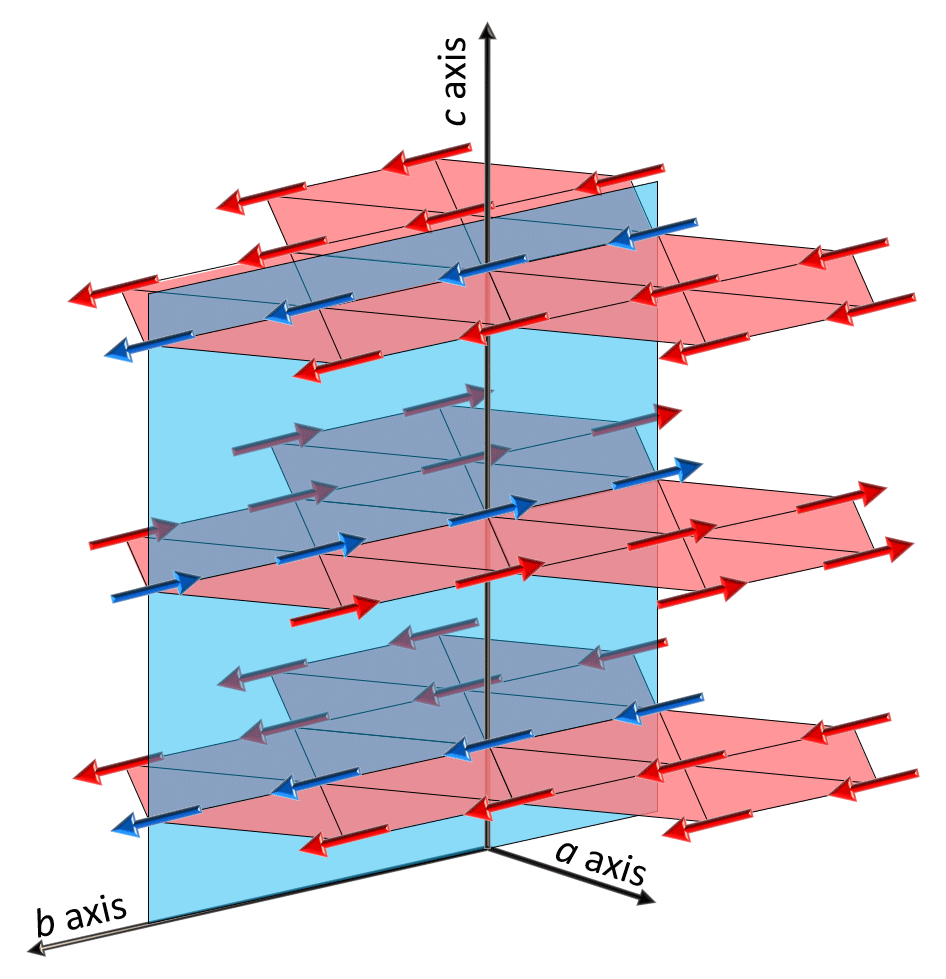
Researchers discovered a new phase of nanoconfined water; separate water molecules that are confined within nanocavities formed by ions of cordierite crystal lattice. The first reliable experimental observation of a phase transition in a network of dipole-dipole coupled water molecules is, in and of itself, an important fundamental breakthrough. But apart from that, the discovered phenomenon can also find practical applications in ferroelectrics, artificial quantum systems, and biocompatible nanoelectronics.
The study was a joint effort of MIPT scientists and researchers from Shubnikov Institute of Crystallography, A. M. Prokhorov General Physics Institute of RAS, Skoltech, Sobolev Institute of Geology and Mineralogy, and Novosibirsk State University, as well as their colleagues from Germany (Stuttgart University), the Czech Republic (Prague Institute of Physics and MGML), and Japan (University of Tokyo). The results of the study have been reported in Nature Communications.
“We are searching for new phases of electric dipole lattice, i. e. an ensemble of interacting point electric dipoles,” explained Mikhail Belyanchikov, one of the study’s initiators and a junior researcher at MIPT Laboratory of Terahertz Spectroscopy. “A great number of different magnetic dipole phases have been discovered but the research of material phases related not to magnetic but rather to point electric dipoles is still in its early stages. Moreover, electric dipole lattices are a type of ferroelectrics that may have promising microelectronic applications.”
MGML 20T state-of-the-art cryomagnet was used due to its unique combination of lowest achievable temperatures below 300 mK in combination with low noise high-frequency measurements.
It is known that to experimentally realize a lattice of point electric dipoles is a challenging task. Usually physicists use the so-called interferometric optical lattice—a periodic structure of fields that is created as the result of laser beams interference. Ultracold atoms of materials to be studied are placed into the lattice points. But researchers at MIPT Laboratory of Terahertz Spectroscopy found a more efficient way. They place separate water molecules that possess a rather high electric dipole moment into a so-called dielectric matrix, in this case, a zeolite crystal lattice with periodically distributed nanoscale voids formed by lattice ions. One then gets an easily handled sample (a crystal) with practically free water molecules trapped (during crystal growth) in these voids—the so-called nanoconfined water. This sample can be studied in a wide range of temperatures including room temperature and in different environments (electric fields, pressure, etc.).
The key result of the study however was achieved at rather low temperature of 3 K (–270 °C). The studied electric dipole lattice of polar water molecules was based on a cordierite crystal—a member of the zeolites family. The researchers observed an order-disorder ferroelectric phase transition in a three-dimensional nanoconfined water molecular network at the temperature of 3 K. “It was challenging to find an instrument which can cool our sample down to sub-kelvin temperatures and simultaneously allow high-frequency dielectric measurements. 20T MGML cryomagnet is ideal for that due to robust coaxial wiring in its He3 insert,” explained Maxim Savinov who performed MGML measurements together with local contact Petr Proschek.
Water molecules inside a crystal. Credit: Daria Sokol, MIPT
Cordierite crystal. Credit: Depositphotos
Schematic illustration of ordered state of the electric dipole lattice of polar water molecules inside a cordierite crystal.
“Not only does studying nanoconfined water molecules have a fundamental importance for the field of electro-dipolar lattices but it also contributes to deeper understanding of natural phenomena and may even potentially enable construction of biocompatible nanoelectronic devices. This is a rapidly developing field that promises new and extremely efficient electronics based on biological materials,” comments Boris Gorshunov, who heads MIPT Laboratory of Terahertz Spectroscopy.
For more informations, read the original article featured on phys.org or publication in Nature Communications.


